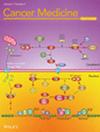A Novel Prognostic Risk-Scoring Model Based on RAS Gene-Associated Cluster in Pediatric Acute Myeloid Leukemia
Abstract
Background
With the rapid development of diagnostic techniques and treatment strategies, there are notable improvements in pediatric acute myeloid leukemia (AML) prognosis. Nevertheless, the pathogenesis of AML remains largely unknown. This study aims to investigate the RAS pathway-associated genes based on bioinformatics analysis, and investigate their underlying mechanisms in the initiation and progression of AML.
Materials and Methods
The UCSC Xena database was the source of the training set data, while the GSE192638 dataset was the source of the validation set data. Children in the training set were split up into two groups according to RAS pathway-associated genes, and then differentially expressed genes (DEGs) of them were screened. To discover prognosis-related genes and develop a prognostic risk-scoring model, we employed One-way Cox and LASSO regression analysis. The performance of the model was assessed by an independent validation dataset. Survival analysis was performed using the Kaplan-Meier (K-M) curve. Furthermore, we investigated the association between the prognostic risk-scoring model and the correlation between immune infiltration and drug sensitivity. The expression levels of genes associated with reverse transcription-polymerase chain reaction were quantified.
Results
We built a prognostic risk-scoring model comprising 26 DEGs. Depending on the risk score, AML patients were split up into two groups: high- and low-risk groups. Notably, compared with the survival time of patients in the high- risk group, that in the low-risk group was substantially prolonged. Univariate (uniCox) as well as multivariate Cox (multiCox) regression analyses were carried out, demonstrating that the risk score emerged as a separate risk factor for prognosis. A nomogram that incorporates clinical factors and prognostic risk scores was proposed to increase the accuracy of survival rates estimation. Subsequent analyses revealed significant connections of the risk score with the immune infiltration and drug sensitivity. The experimental results demonstrated significantly elevated expression levels of GCSAML, MED12L, and TCF4 in AML samples compared to normal samples.
Conclusion
The developed prognostic risk-scoring model, along with the identified key risk genes, holds promise as candidate prognostic biomarkers and treatment targets for pediatric AML.


 求助内容:
求助内容: 应助结果提醒方式:
应助结果提醒方式:


